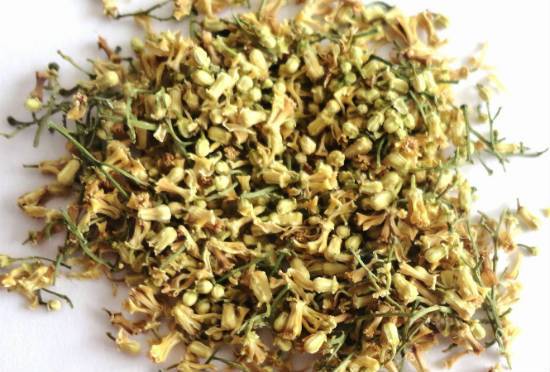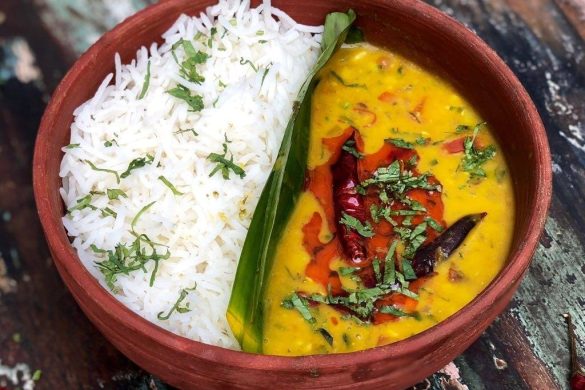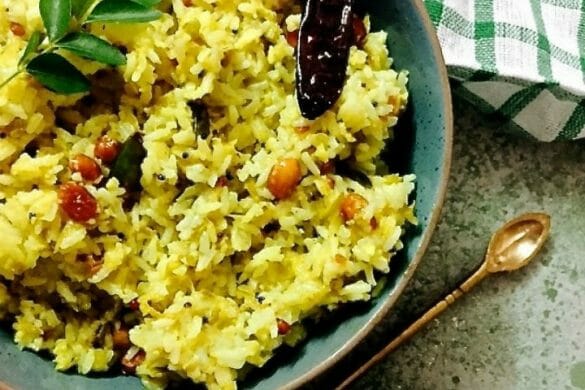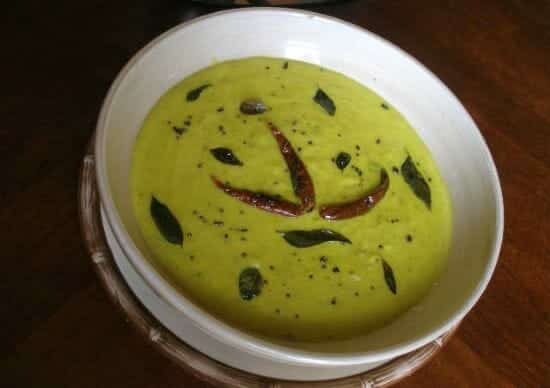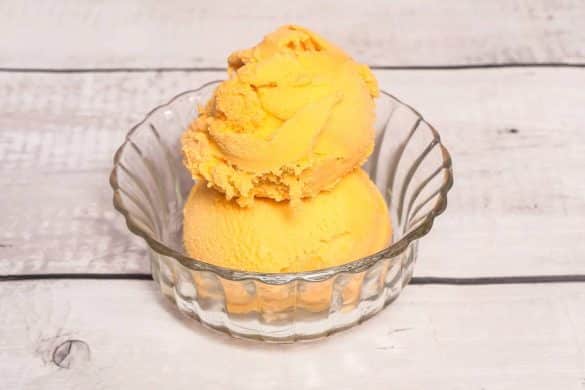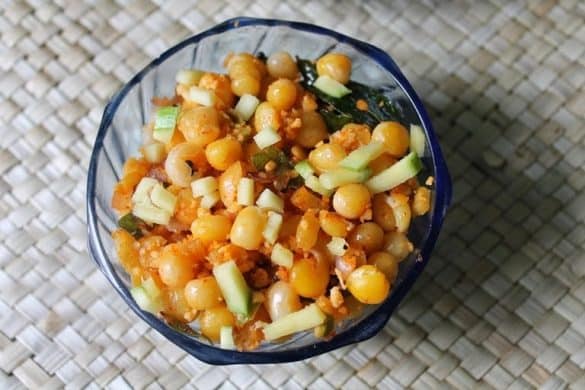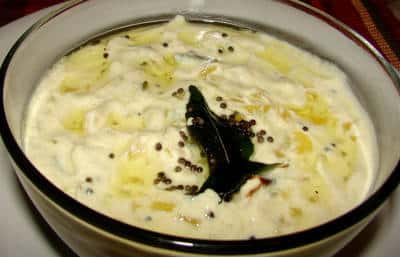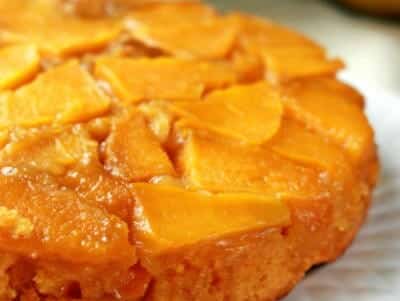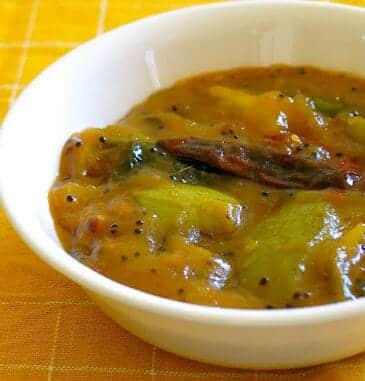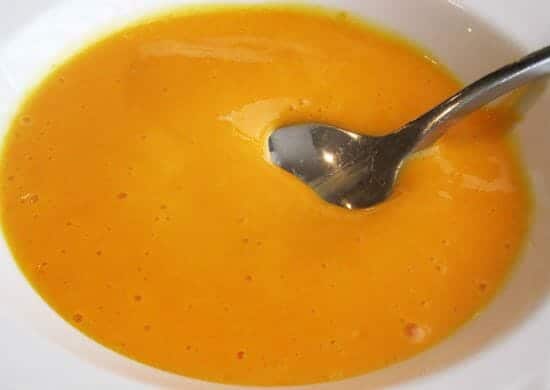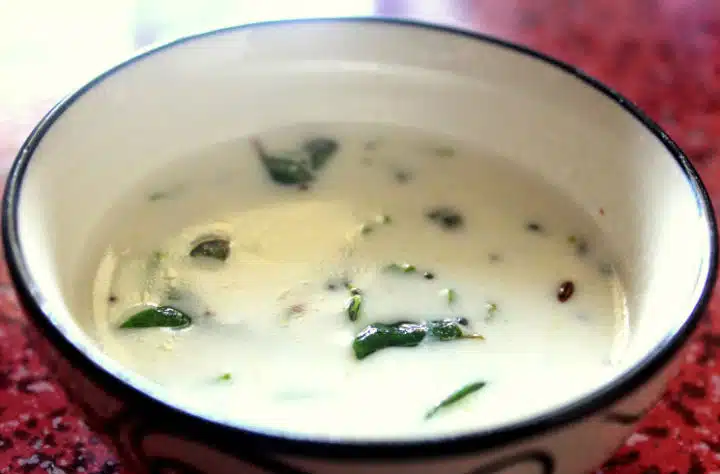Veppam Poo Mango Pachadi combines the tangy taste of green mangoes with the bitterness of dried neem flowers, creating a delightful contrast. Sweetened with Jaggery and spiced with green chillies, this dish is perfect for those who enjoy bold flavours. It’s often served during festivals and special occasions, making it a cherished part of South Indian culinary traditions.
About the Recipe
This recipe is a beautiful exploration of flavours, blending sour mangoes and bitter neem flowers with sweet Jaggery. Originating from South India, Veppam Poo Mango Pachadi is a unique dish that not only tastes amazing but also offers several health benefits. Neem flowers are known for their medicinal properties, and this dish creatively incorporates them into a tasty and nutritious meal. Perfect for serving with rice, this package is simple to prepare and rich in flavour.
Why You Will Love This Recipe
You’ll love this recipe for its unique combination of flavours. The green mangoes’ tanginess perfectly balances the neem flowers’ bitterness, all sweetened with Jaggery to create a harmonious taste. The simplicity of the preparation, combined with the aromatic tempering of mustard seeds and green chillies, makes it a delightful dish that’s sure to impress. Whether looking for a new side dish or a unique way to enjoy mangoes, this recipe will become a favorite.
Cooking Tips
- Ensure the mangoes are chopped evenly for uniform cooking.
- Fry the neem flowers over low heat to avoid burning and ensure a gentle release of their flavours.
- Adjust the quantity of Jaggery to your taste; more Jaggery is needed for a sweeter package, and less is required for a more tangy result.
- Fresh neem flowers can be used, but dried ones are more commonly used and accessible to store.
Cultural Context
Veppam Poo Mango Pachadi is a traditional dish from Tamil Nadu, often prepared during Tamil New Year and other festivals. It’s not just a culinary delight but also holds cultural significance, symbolizing the different flavours of life—bitter, sweet, tangy, and spicy—much like the varied experiences one encounters.
Serving and Storing Suggestions
Serve Veppam Poo Mango Pachadi with hot rice for a traditional South Indian meal. This dish can be stored in an airtight container in the refrigerator for up to three days—reheat gently before serving to enjoy the best flavours.
Other Similar Recipes
- Mango Thokku
- Sambar
- Rasam
- Vatha Kuzhambu
Nutrient Benefits
- Neem Flowers: Known for their detoxifying properties and ability to improve digestion.
- Green Mangoes: Rich in vitamin C, helping boost the immune system.
- Jaggery: A healthier alternative to refined sugar, providing iron and minerals.

Veppam Poo Mango Pachadi
Ingredients
- 2 Cups Chopped Green Mangoes
- 2 tbsp Dried Neem Flowers
- 200 gms Jaggery
- Salt to Taste
- 1 tsp Turmeric Powder
- 2 tsp Ghee
- 1 tsp Mustard Seeds
- 4-5 Green Chillies
Instructions
- Heat a pan of water over a medium flame.
- Add the chopped mangoes and bring to a boil.
- Add turmeric powder and stir.
- When the mangoes are soft, add Jaggery and stir until fully dissolved.
- Turn off the heat.
- In a separate pan, heat ghee over medium flame.
- Add mustard seeds and fry for 30 seconds.
- Add green chillies and fry for a minute.
- Add the neem flowers and stir-fry over low flame for 1-2 minutes.
- Pour this mixture into the mangoes.
- Add salt and mix well.
- Serve with rice.
Sign up for our newsletter
Frequently Asked Questions
How do I ensure the neem flowers don’t turn bitter while cooking?
To avoid bitterness, fry the neem flowers over a low flame for a short time. This ensures they release their flavour without burning. Keep stirring and watch them closely to prevent overcooking.
Can I use fresh neem flowers instead of dried ones?
Yes, fresh neem flowers can be used. They might have a slightly different flavour profile but still provide characteristic bitterness. Fresh neem flowers are seasonal, so dried ones are more commonly used.
What can I serve with Veppam Poo Mango Pachadi?
Serve it with hot rice for a traditional meal. It pairs well with other South Indian dishes like Sambar, Rasam, and Vatha Kuzhambu, adding a unique flavour contrast to the meal.
Is there a substitute for Jaggery in this recipe?
If you don’t have Jaggery, you can substitute brown sugar or palm sugar. However, Jaggery is preferred for its distinct flavour and health benefits.
Can this recipe be made vegan?
To make this recipe vegan, replace ghee with a plant-based oil like coconut or sesame oil. The rest of the ingredients are plant-based, making it easy to adapt to a vegan diet.

